Abstract
Potentials recorded from the surface of the superior cervical ganglion of cats after an intra-arterial injection of acetylcholine were characterized by a complex waveform which depended on the amount of drug administered. Small doses of acetylcholine evoked a potential consisting of low amplitude hyperpolarization followed by low amplitude depolarization. Somewhat larger doses of acetylcholine caused a triphasic potential containing an initial period of depolarization in addition to the periods of hyperpolarization and delayed depolarization. Still larger doses of acetylcholine produced usually a monophasic wave of depolarization. Small doses of atropine prolonged the initial period of depolarization and prevented the hyperpolarization and delayed depolarization. Hexamethonium reduced or abolished the initial depolarization and enhanced or unmasked the hyperpolarization. The block of transmission occurring during the falling phase of the initial depolarization or during the hyperpolarization was antagonized by atropine. Unlike acetylcholine, tetramethylammonium produced only a prolonged ganglion depolarization which was unaffected by atropine and blocked by hexamethonium. The block of transmission by tetramethylammonium was partially prevented by atropine. These findings support the proposals that three pharmacologically distinctive cholinoceptive sites are present in sympathetic ganglia and, further, that activation of a cholinoceptive site sensitive to atropine may be involved in the block of transmission produced by acetylcholine and related drugs.
Full text
PDF
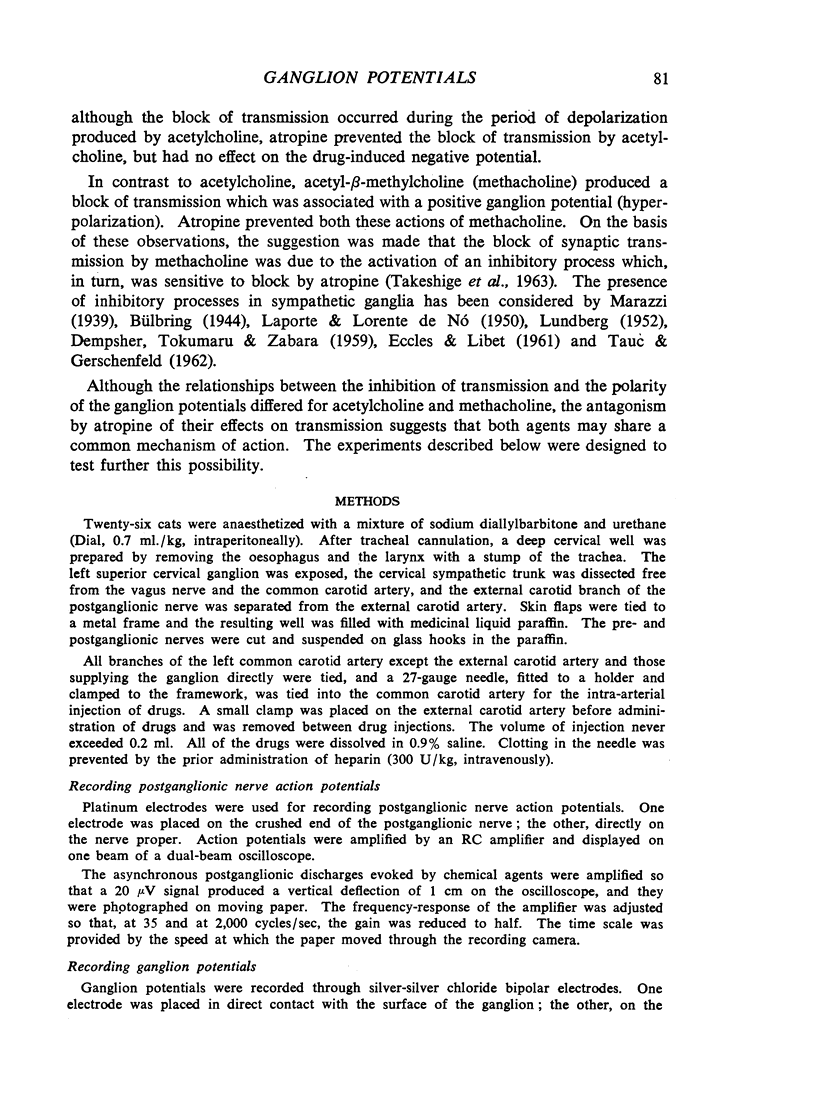
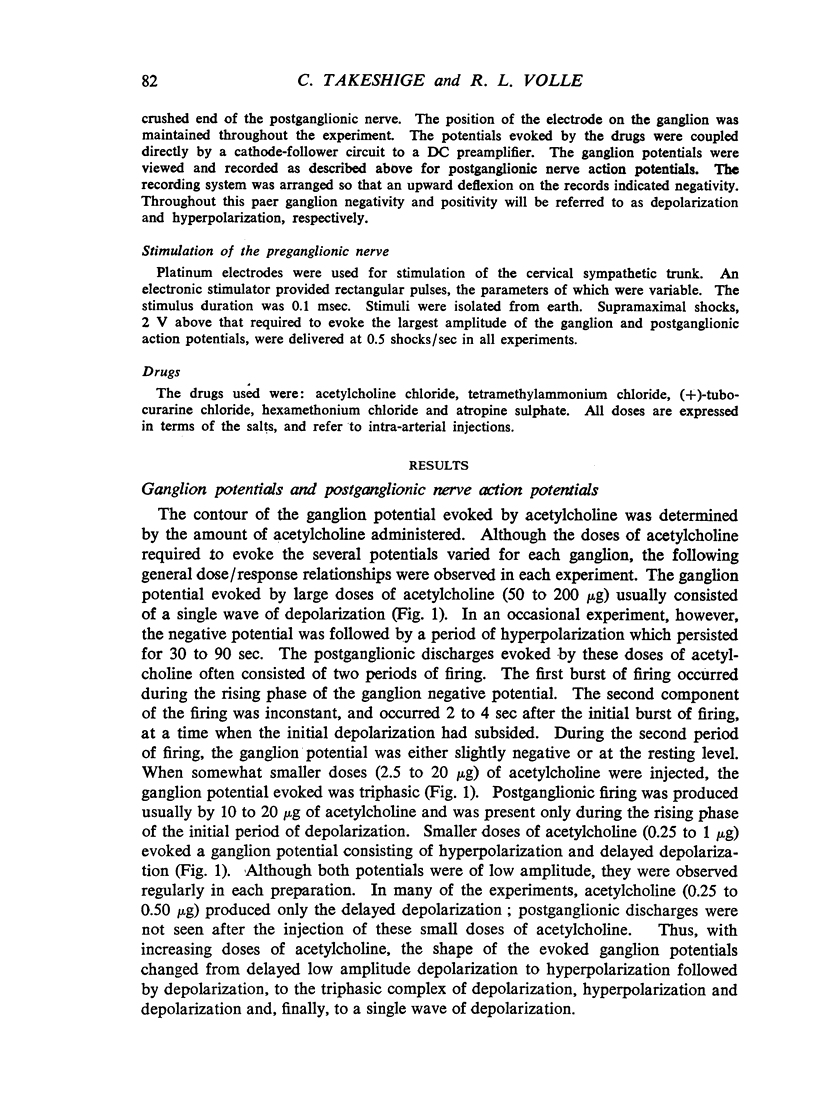
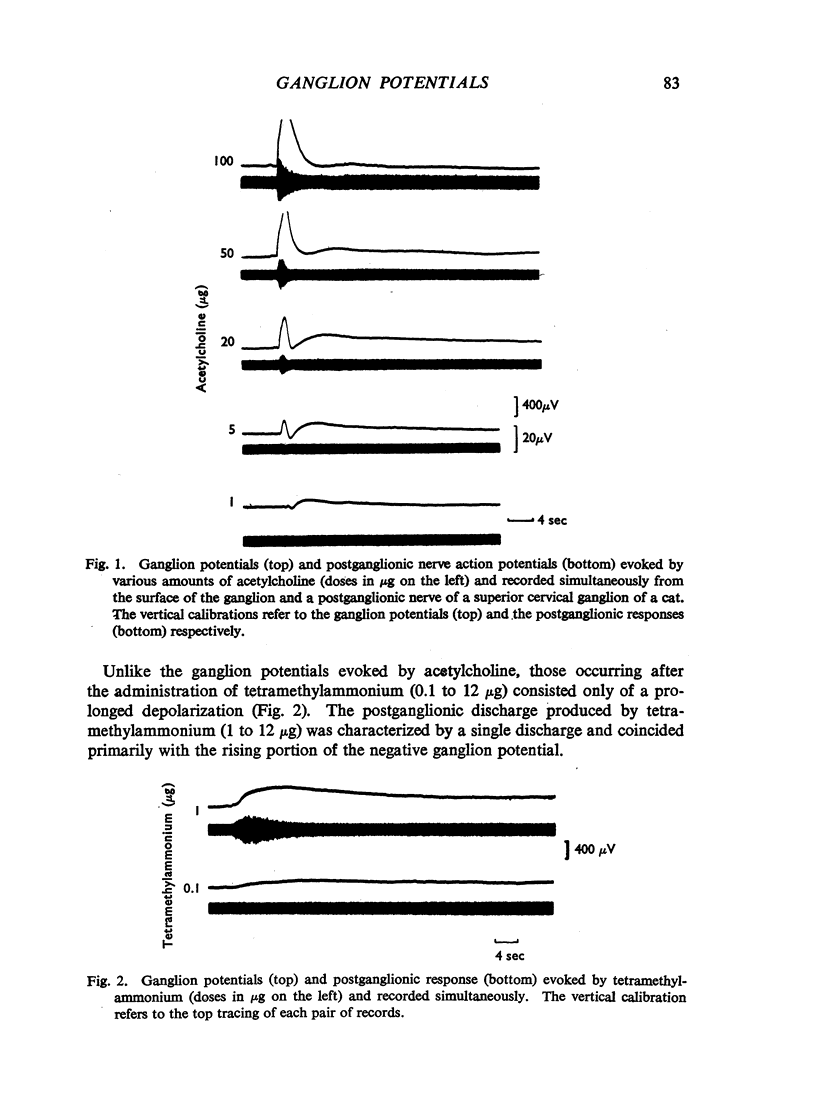

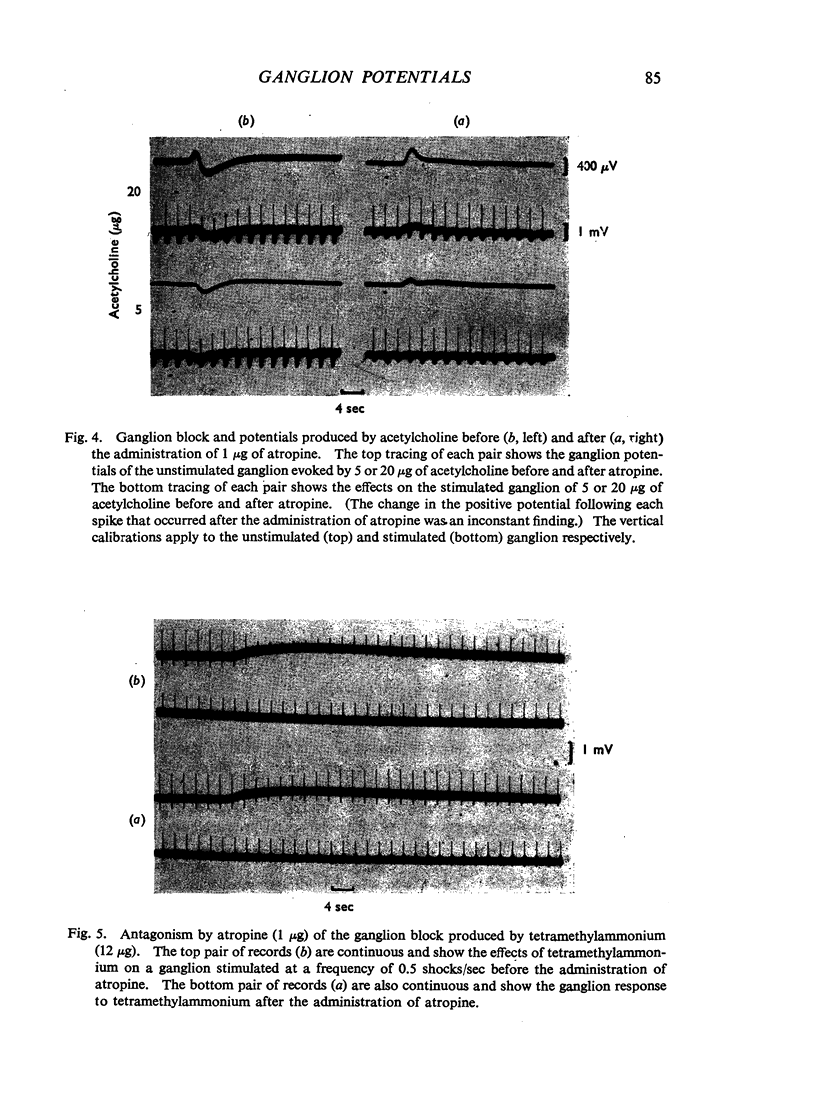

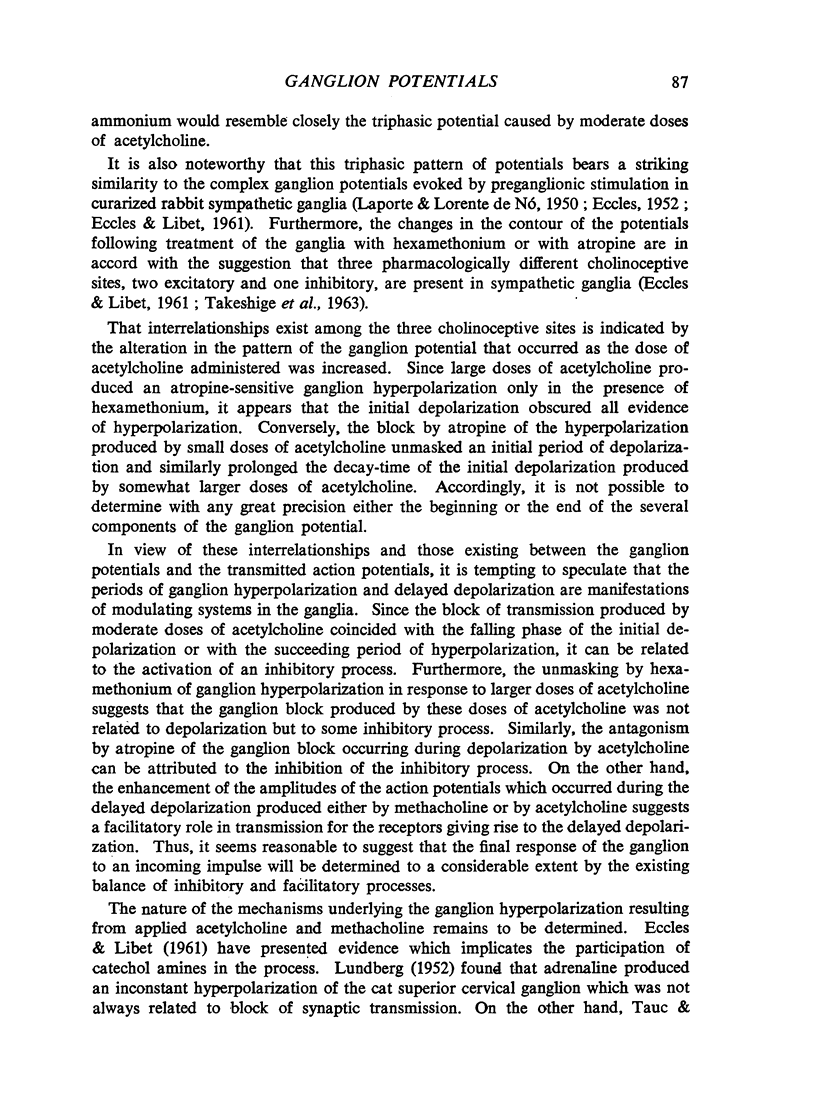
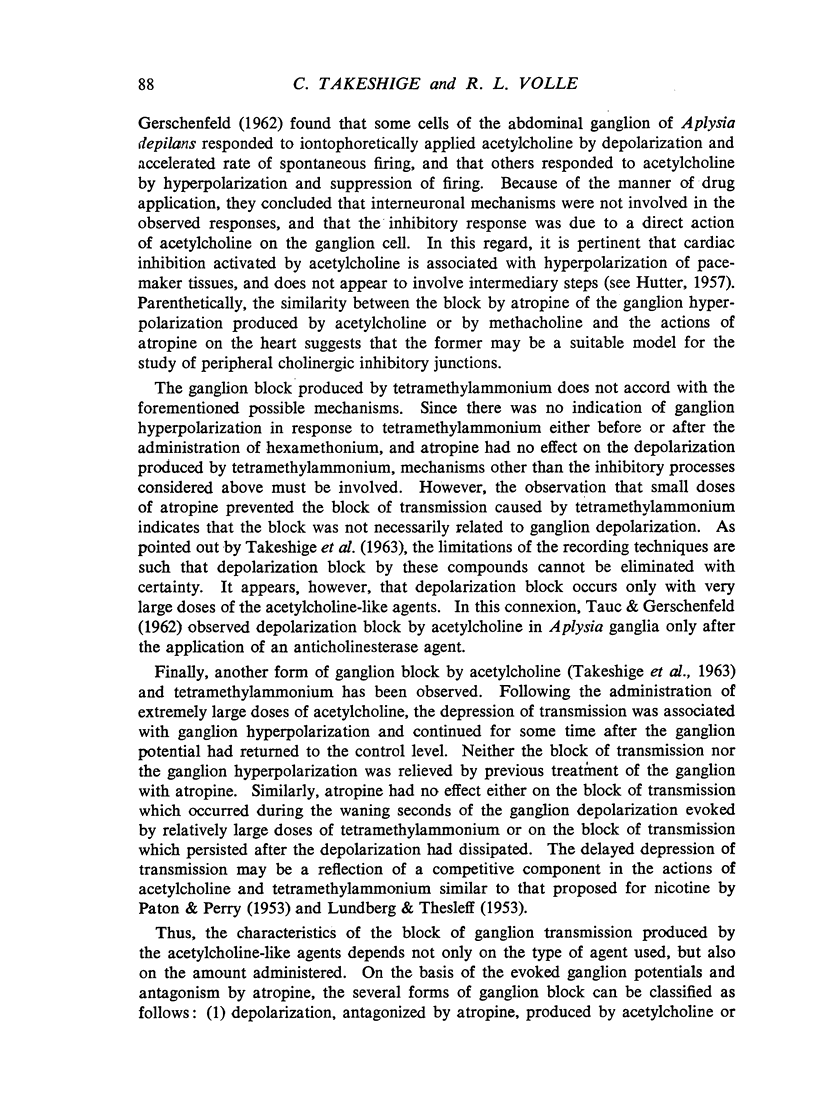
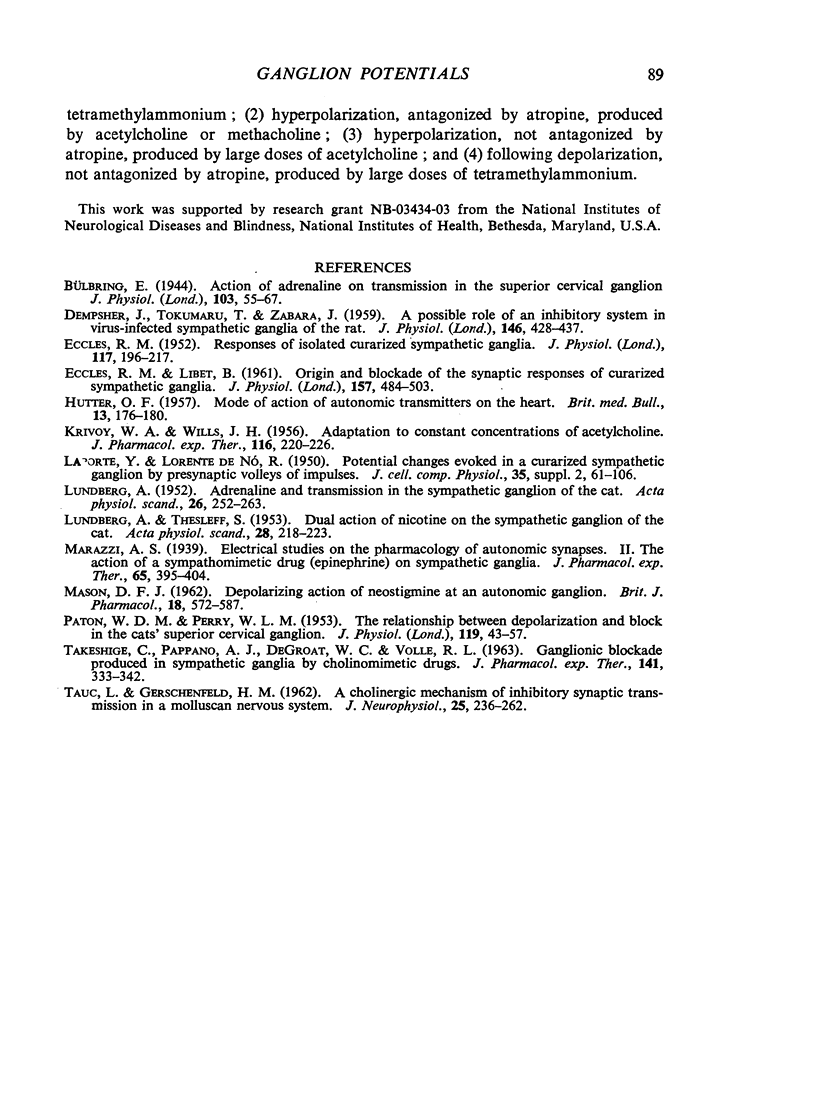
Images in this article
Selected References
These references are in PubMed. This may not be the complete list of references from this article.
- Bülbring E. The action of adrenaline on transmission in the superior cervical ganglion. J Physiol. 1944 Jun 15;103(1):55–67. doi: 10.1113/jphysiol.1944.sp004062. [DOI] [PMC free article] [PubMed] [Google Scholar]
- DEMPSHER J., TOKUMARU T., ZABARA J. A possible role of an inhibitory system in virus-infected sympathetic ganglia of the rat. J Physiol. 1959 Jun 11;146(3):428–437. doi: 10.1113/jphysiol.1959.sp006202. [DOI] [PMC free article] [PubMed] [Google Scholar]
- ECCLES R. M., LIBET B. Origin and blockade of the synaptic responses of curarized sympathetic ganglia. J Physiol. 1961 Aug;157:484–503. doi: 10.1113/jphysiol.1961.sp006738. [DOI] [PMC free article] [PubMed] [Google Scholar]
- ECCLES R. Responses of isolated curarized sympathetic ganglia. J Physiol. 1952 Jun;117(2):196–217. doi: 10.1113/jphysiol.1952.sp004740. [DOI] [PMC free article] [PubMed] [Google Scholar]
- HUTTER O. F. Mode of action of autonomic transmitters on the heart. Br Med Bull. 1957 Sep;13(3):176–180. doi: 10.1093/oxfordjournals.bmb.a069609. [DOI] [PubMed] [Google Scholar]
- KRIVOY W. A., WILLS J. H. Adaptation to constant concentrations of acetylcholine. J Pharmacol Exp Ther. 1956 Feb;116(2):220–226. [PubMed] [Google Scholar]
- LAPORTE Y., LORENTE de NO R. Potential changes evoked in a curarized sympathetic ganglion by presynaptic volleys of impulses. J Cell Physiol Suppl. 1950 Jul;35(Suppl 2):61–106. doi: 10.1002/jcp.1030350505. [DOI] [PubMed] [Google Scholar]
- LUNDBERG A. Adrenaline and transmission in the sympathetic ganglion of the cat. Acta Physiol Scand. 1952 Sep 10;26(2-3):252–263. doi: 10.1111/j.1748-1716.1952.tb00908.x. [DOI] [PubMed] [Google Scholar]
- LUNDBERG A., THESLEFF S. Dual action of nicotine on the sympathetic ganglion of the cat. Acta Physiol Scand. 1953;28(2-3):218–223. doi: 10.1111/j.1748-1716.1953.tb00972.x. [DOI] [PubMed] [Google Scholar]
- MASON D. F. Depolarizing action of neostigmine at an autonomic ganglion. Br J Pharmacol Chemother. 1962 Jun;18:572–587. doi: 10.1111/j.1476-5381.1962.tb01176.x. [DOI] [PMC free article] [PubMed] [Google Scholar]
- PATON W. D. M., PERRY W. L. M. The relationship between depolarization and block in the cat's superior cervical ganglion. J Physiol. 1953 Jan;119(1):43–57. doi: 10.1113/jphysiol.1953.sp004827. [DOI] [PMC free article] [PubMed] [Google Scholar]
- TAKESHIGE C., PAPPANO A. J., DEGROAT W. C., VOLLE R. L. GANGLIONIC BLOCKADE PRODUCED IN SYMPATHETIC GANGLIA BY CHOLINOMIMETIC DRUGS. J Pharmacol Exp Ther. 1963 Sep;141:333–342. [PubMed] [Google Scholar]
- TAUC L., GERSCHENFELD H. M. A cholinergic mechanism of inhibitory synaptic transmission in a molluscan nervous system. J Neurophysiol. 1962 Mar;25:236–262. doi: 10.1152/jn.1962.25.2.236. [DOI] [PubMed] [Google Scholar]




